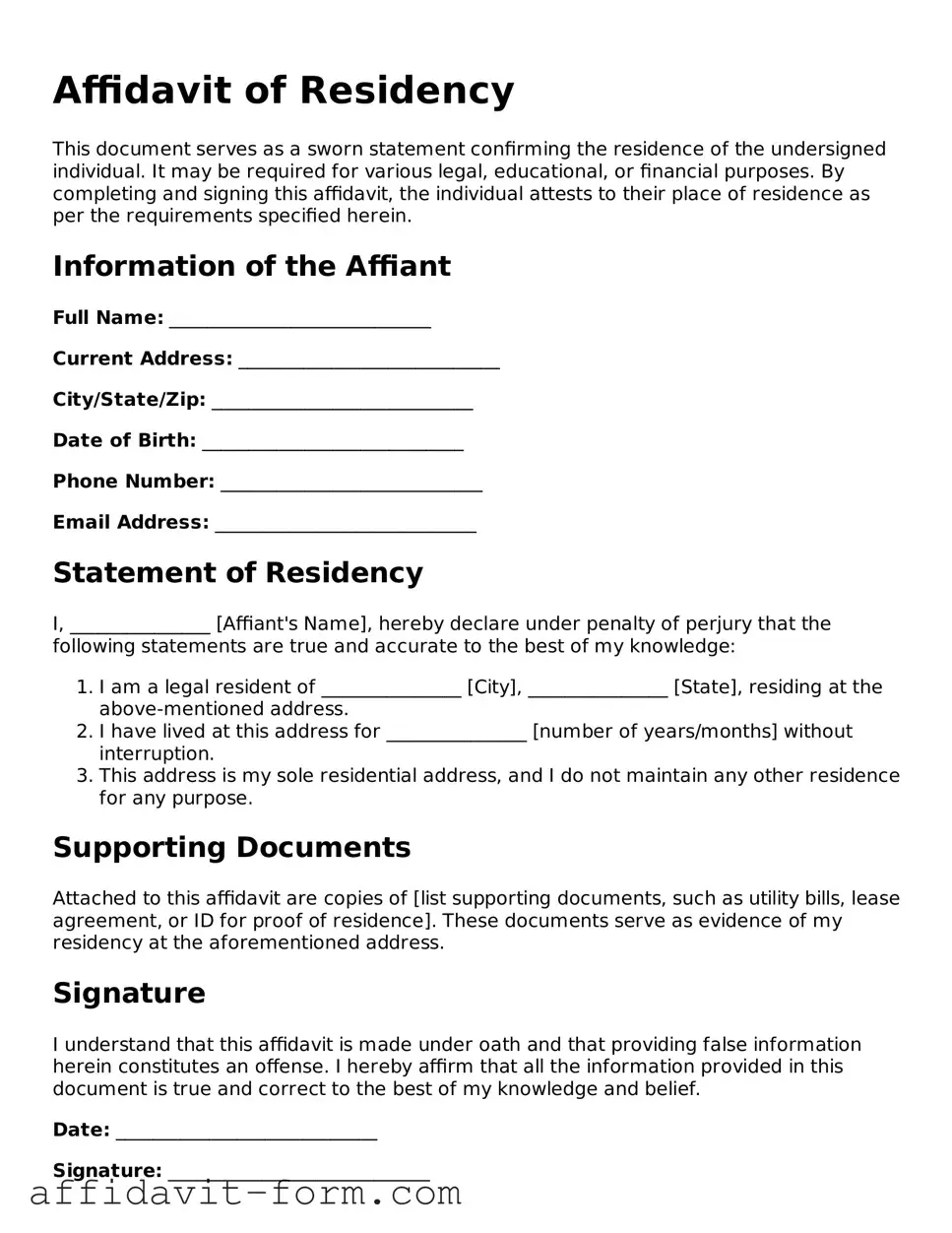Affidavit of Residency
This document serves as a sworn statement confirming the residence of the undersigned individual. It may be required for various legal, educational, or financial purposes. By completing and signing this affidavit, the individual attests to their place of residence as per the requirements specified herein.
Information of the Affiant
Full Name: ____________________________
Current Address: ____________________________
City/State/Zip: ____________________________
Date of Birth: ____________________________
Phone Number: ____________________________
Email Address: ____________________________
Statement of Residency
I, _______________ [Affiant's Name], hereby declare under penalty of perjury that the following statements are true and accurate to the best of my knowledge:
- I am a legal resident of _______________ [City], _______________ [State], residing at the above-mentioned address.
- I have lived at this address for _______________ [number of years/months] without interruption.
- This address is my sole residential address, and I do not maintain any other residence for any purpose.
Supporting Documents
Attached to this affidavit are copies of [list supporting documents, such as utility bills, lease agreement, or ID for proof of residence]. These documents serve as evidence of my residency at the aforementioned address.
Signature
I understand that this affidavit is made under oath and that providing false information herein constitutes an offense. I hereby affirm that all the information provided in this document is true and correct to the best of my knowledge and belief.
Date: ____________________________
Signature: ____________________________
Notary Public: (if applicable) ____________________________
This document was notarized in _______________ [City/State] on _______________ [Date].
This Affidavit of Residency may need to be customized according to the specific laws and requirements of the state or institution requesting it.
